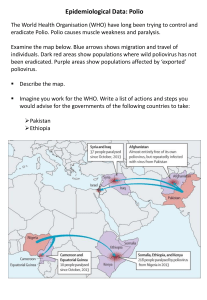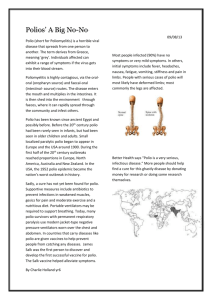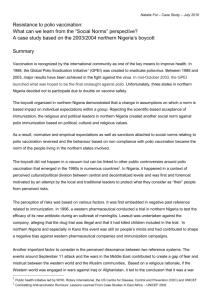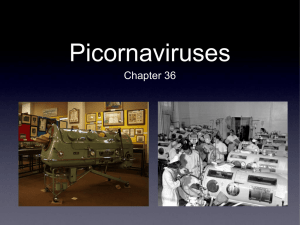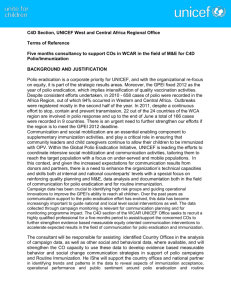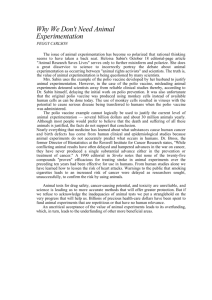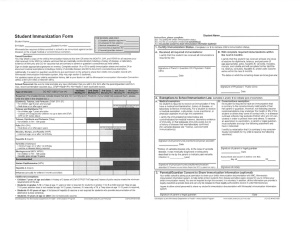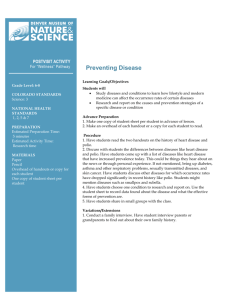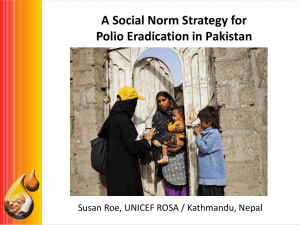Nigeria - Global Polio Eradication Initiative
advertisement
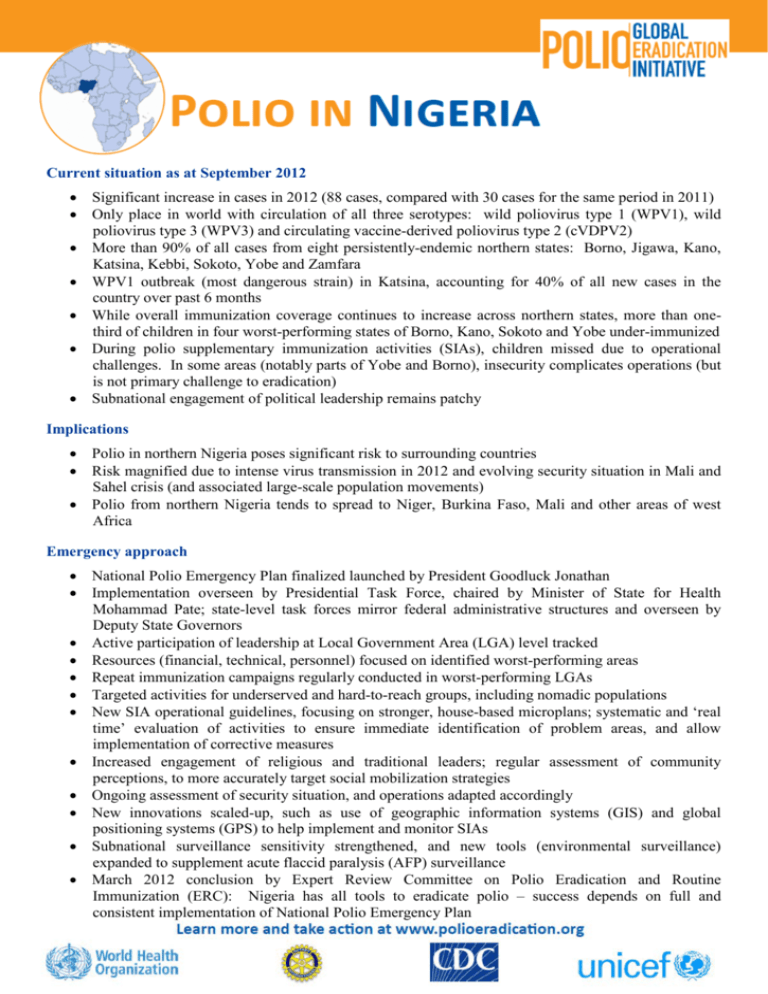
Current situation as at September 2012 • Significant increase in cases in 2012 (88 cases, compared with 30 cases for the same period in 2011) • Only place in world with circulation of all three serotypes: wild poliovirus type 1 (WPV1), wild poliovirus type 3 (WPV3) and circulating vaccine-derived poliovirus type 2 (cVDPV2) • More than 90% of all cases from eight persistently-endemic northern states: Borno, Jigawa, Kano, Katsina, Kebbi, Sokoto, Yobe and Zamfara • WPV1 outbreak (most dangerous strain) in Katsina, accounting for 40% of all new cases in the country over past 6 months • While overall immunization coverage continues to increase across northern states, more than onethird of children in four worst-performing states of Borno, Kano, Sokoto and Yobe under-immunized • During polio supplementary immunization activities (SIAs), children missed due to operational challenges. In some areas (notably parts of Yobe and Borno), insecurity complicates operations (but is not primary challenge to eradication) • Subnational engagement of political leadership remains patchy Implications • Polio in northern Nigeria poses significant risk to surrounding countries • Risk magnified due to intense virus transmission in 2012 and evolving security situation in Mali and Sahel crisis (and associated large-scale population movements) • Polio from northern Nigeria tends to spread to Niger, Burkina Faso, Mali and other areas of west Africa Emergency approach • National Polio Emergency Plan finalized launched by President Goodluck Jonathan • Implementation overseen by Presidential Task Force, chaired by Minister of State for Health Mohammad Pate; state-level task forces mirror federal administrative structures and overseen by Deputy State Governors • Active participation of leadership at Local Government Area (LGA) level tracked • Resources (financial, technical, personnel) focused on identified worst-performing areas • Repeat immunization campaigns regularly conducted in worst-performing LGAs • Targeted activities for underserved and hard-to-reach groups, including nomadic populations • New SIA operational guidelines, focusing on stronger, house-based microplans; systematic and ‘real time’ evaluation of activities to ensure immediate identification of problem areas, and allow implementation of corrective measures • Increased engagement of religious and traditional leaders; regular assessment of community perceptions, to more accurately target social mobilization strategies • Ongoing assessment of security situation, and operations adapted accordingly • New innovations scaled-up, such as use of geographic information systems (GIS) and global positioning systems (GPS) to help implement and monitor SIAs • Subnational surveillance sensitivity strengthened, and new tools (environmental surveillance) expanded to supplement acute flaccid paralysis (AFP) surveillance • March 2012 conclusion by Expert Review Committee on Polio Eradication and Routine Immunization (ERC): Nigeria has all tools to eradicate polio – success depends on full and consistent implementation of National Polio Emergency Plan
